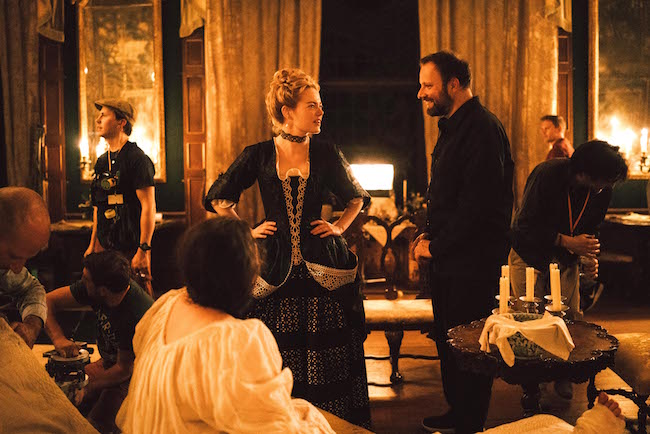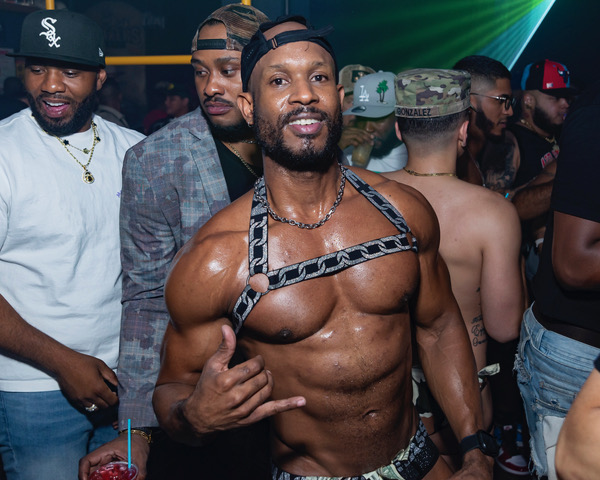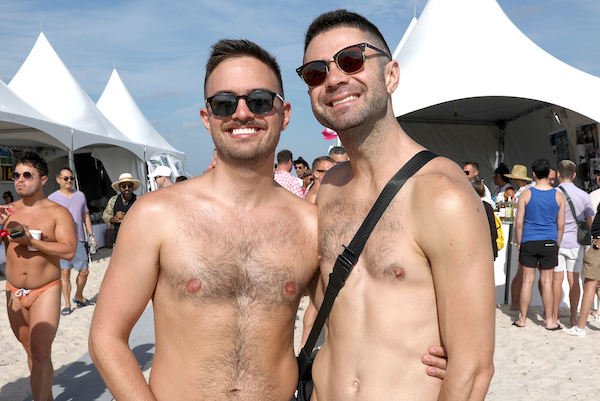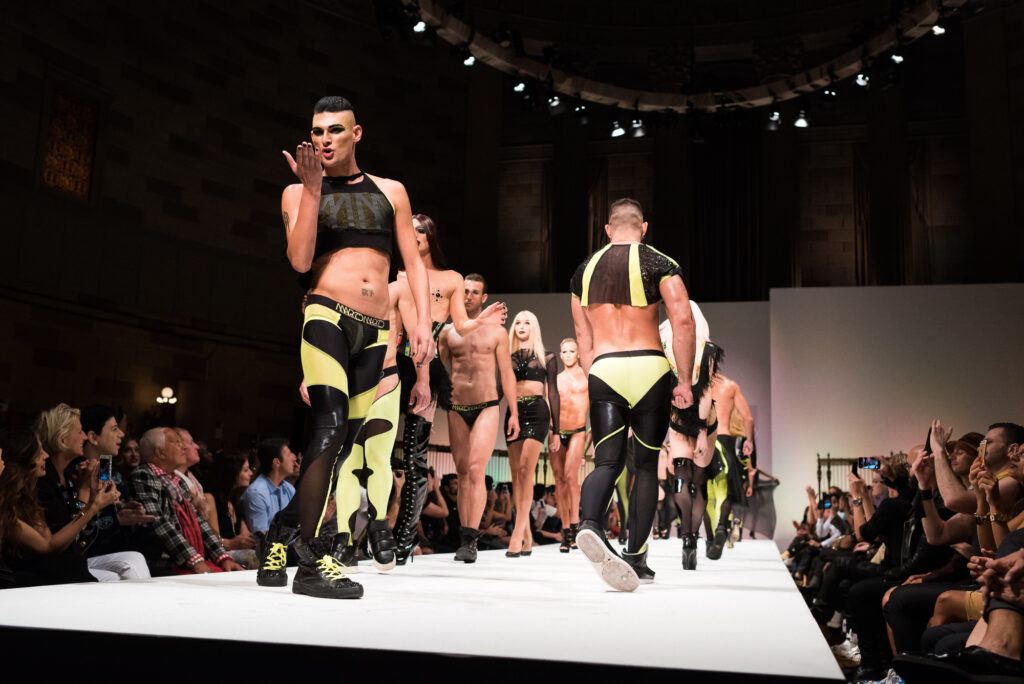Yorgos Lanthimos – ‘The Favourite’
The flawlessly brilliant director of “The Favourite,” set to be celebrated in theaters on November 23, has a reputation for creating the unique. After interviewing the most illuminating stars today—Emma Stone, Rachel Weisz and Joe Alwyn—without exception, they all respected and loved him as you would an idol.
It was an honor to have a conversation with someone behind the scenes that is so masterful, especially considering that “The Favourite” will undeniably rise to Oscar status. The film possesses every aspect needed to make a successful film, with twists and turns and a hint of insanity along the way.
Born in Athens, Lanthimos has received several awards at Cannes for movies, including “The Lobster,” “The Killing of a Sacred Deer” and “Dogtooth.” “The Favourite,” written by Deborah Davis and Tony McNamara, is a completely unexpected movie from start to finish including elements of power, lust, love, comedy, darkness, violence, passion and high-spirited emotion.

Congratulations on the movie. This is the first movie of the last four that you did not write. How different was it directing it?
It was very different in the end. I developed my thoughts really closely with the screenplay. It was a very long process from first reading the original screenplay with Deborah Davis. I was very interested in it, the story and the characters. I worked a little bit with her because she was very familiar with the whole story, the events, as much of them as we know. It was a very interesting story about the three women, and I wanted to focus even more on the women. So I worked with her for a small period of time to distill the story.
Then I felt that I had to work with a different voice that would help me go more towards the direction that I was looking for. So we spent a lot of time with the producers to find the writer that had that voice. We read hundreds of playwrights and writers, and we ended up finding Tony McNamara, who is an Australian screenwriter. So I took another seven years—I think the project started like nine years ago, from the first time I read it. We worked with Tony for seven years—not consecutively, but throughout those seven years we worked through different time periods in order to try and get it right. We started again from scratch having all that information and that structure. We started writing it again from scratch in order to make this film different in a way that I was interested in making a British period film about Queen Anne. Actually, it was much longer than I’ve ever worked on any of my films that I co-wrote, because we started inventing a lot of things, we started creating the characters the way we felt it was necessary to create them in order to tell the story we wanted to tell. A lot of it ended up being invented and came from us when we were developing the script. It was basically very similar to the work that I’ve done before.
Was there a message attached to this film, perhaps something dealing with the political environment?
I don’t think of a film that way, that you make a film with a message. I just hope to make films that make people think about things and ask questions. So for me, the reason I was interested in making this film was whatever the message is that you get from it.
The fact that these three people—because of their relationships and their personal goals, their mood or their behavior—affected the lives of millions of other people around them was something interesting. It kind of asks a lot of questions. There were other things like personality and love, the place of women within society and how it is contradictory of how it has been for many years, so there’s a lot of things in question. That’s the message, to think about all these questions.
Joe Alwyn explained that you told them not to research the characters.
I don’t think I told them not to; I told them it wasn’t necessary. We were inspired by real people and whatever we knew of the history, but then we went off and invented a lot of things, and we created our own story and our own characters with a very particular tone. I didn’t think it would necessarily help them a lot to try and find facts of those characters, unless it kind of inspired them to do something in the film that they liked. It’s not that I forbade them to do research, it’s just not necessary. We were not making a loyal story of the film. It’s not a history lesson.
Can you talk about the technical aspects of the film as far as the set and Robbie Ryan and the fisheye lenses? Seems like $1 billion effort.
I did have an idea. As a filmmaker, I was fiddling with certain things the last few films that I made—wide-angle lenses, movements, angles—but especially in this film I just felt that we kind of discovered it as we went along. We knew that we wanted to create this sense of long figures in a huge space, but the more we used wide-angle lenses, the more extreme we went, the more powerful. So we were doing it more and more as filming progressed. To me, the fact that you see the whole space makes it more claustrophobic, because you see where it ends. You don’t assume there’s more. You don’t assume it’s infinite. It ends somewhere. You see that these people are there, and they’re kind of alone.
As we discussed before, there were a few people affecting an entire world. That’s kind of visualized it in that way. With production design, again, we tried to emphasize that these people actually lived in this huge, empty space. While they spent their personal lives there, they were also receiving people there. People would walk into the queen’s bedroom and have a meeting or a meal. The fact that they were connected somehow—we reconstructed this hallway, which again was a fictional thing, between Sarah’s room and Anne’s room. Architecture was quite important in showing the different levels of what went on in the palace. The servants were downstairs, and they had to go upstairs. So all of these architectural items were important.
Where did you shoot the film?
Most of it was Hatfield House, but we had to combine Hampton Court and a couple of other locations.
This is the year of the woman. Was the movie a coincidence?
It wasn’t related when we started working on it, so we can’t take credit for something that is current. For me it was just reacting as a human being to a story that I thought was interesting. I’m interested in seeing complex female roles on screen. The fact that they weren’t all good—they were kind of villainesses and also virtuous at the same time—the fact that we were going to be able to create those complex characters instead of a one-dimensional “this is a good one, this is a bad one,” it was what made me start developing the film nine years ago. Now that we are discussing all of these things, it’s obviously a coincidence, and I hope that as we go forward it’s not going to be so much of an issue.
I felt the ending was amazing and different and shocking in an abrupt way.
What made you think it was amazing?
I thought this because I wanted more—maybe a sequel?—and it was so unexpected.
I think at some point films need to end. They don’t end necessarily when people die. So for me it felt like it was a complete circle. Even if those were fictional people, you would expect that other things happened to them later on. But for me, I think at that point in time it completed a journey. All three women kind of left in a certain state. None of them actually felt that they had completed what they wanted to accomplish.
So then, a sequel?
Maybe, I don’t know. For me the ending felt complete for that kind of story, to end with all three of them in the state that they are in. You can go on forever obviously, but that’s how I felt it should end.






